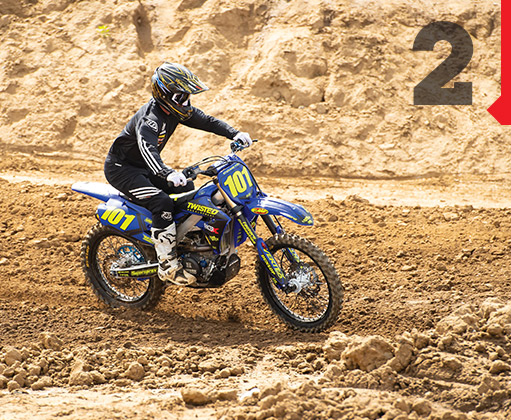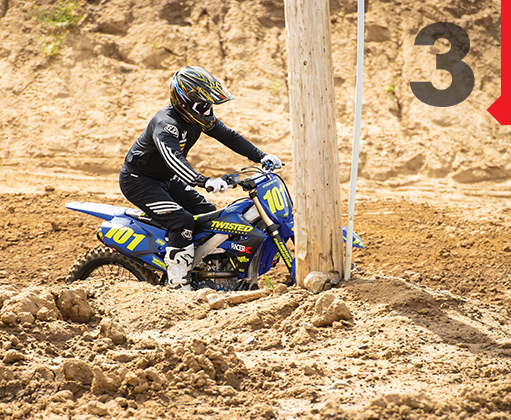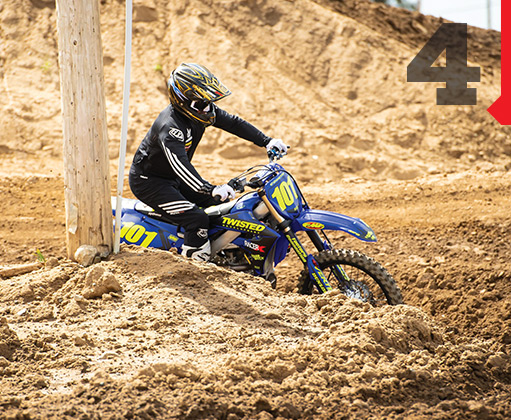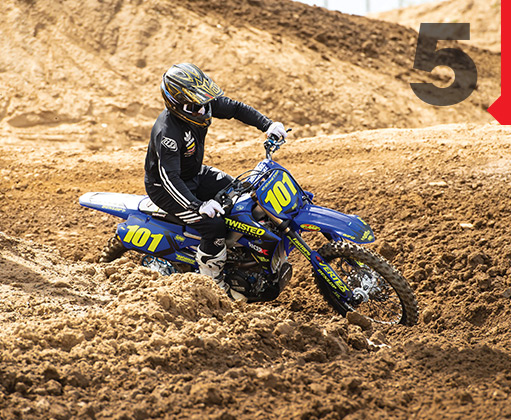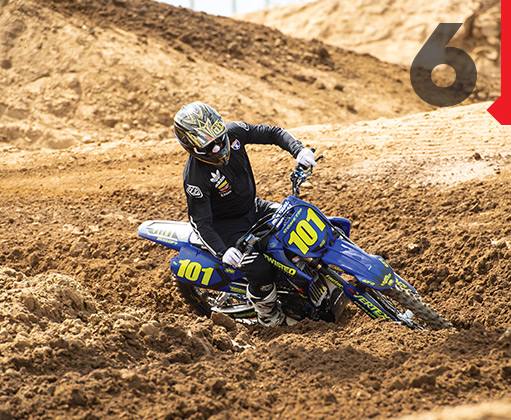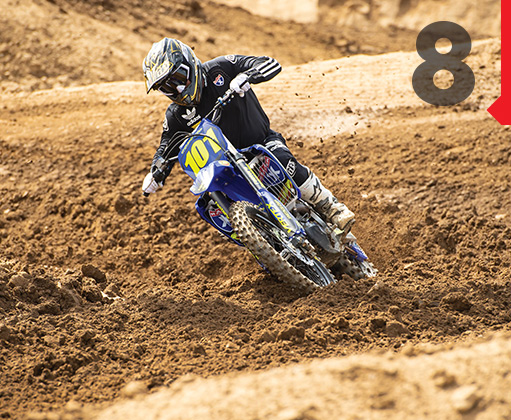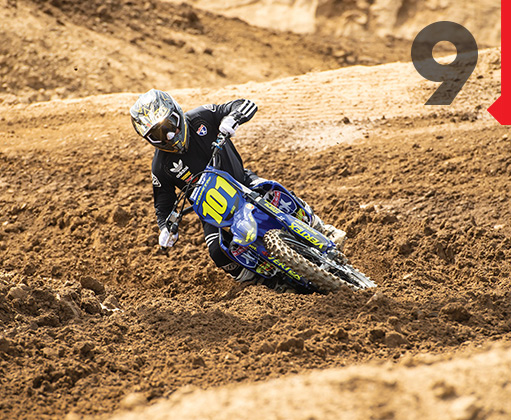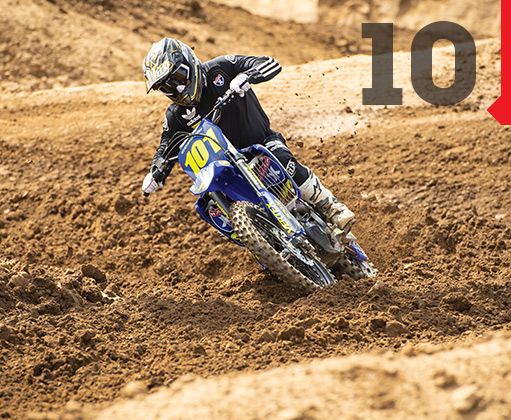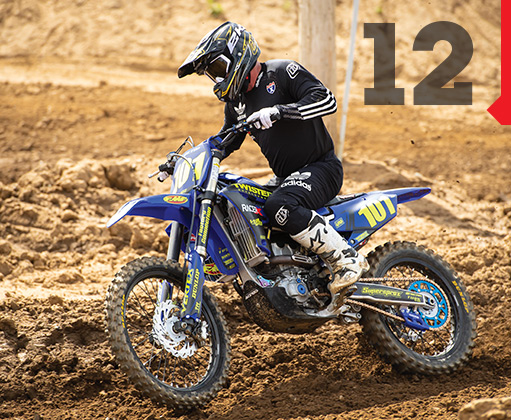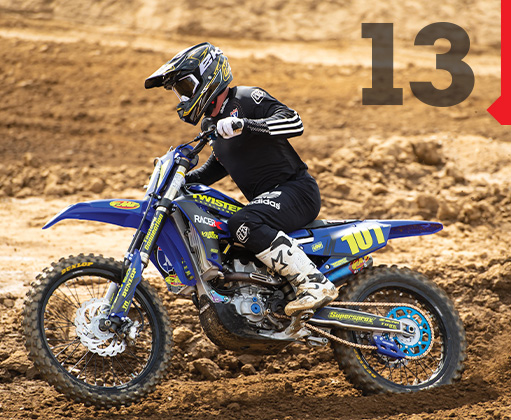


PHOTOS: SIMON CUDBY


PHOTOS: SIMON CUDBY

his month’s segment is a technically advanced skill, but it’s something I believe every rider can and should work on. Ken Roczen and Stefan Everts are two of the most technically sound riders our sport has seen since Jeremy McGrath, Jean-Michel Bayle, or David Bailey. And one thing both of these world champions have in common is keeping their feet on the pegs as much as possible. Everts was known for standing where most other riders would sit, and Roczen has really taken that and adopted his own style of cornering. While he prefers to sit through more turns than Everts, he keeps his feet on the pegs. This doesn’t apply to all turns—ones with long ruts or flat turns better suit having your foot out—but in the right type of corner, watch Ken sit with his feet on the pegs and flow around a turn. It’s a thing of beauty.
In this section, the turn has a tight “hook” in it, but the rut is quite deep. It was actually difficult to keep my foot above the ground because the rut dropped down and the soil inside the rut was high, so I was going through this corner and keeping my feet on the pegs à la Ken Roczen. While you have to stay focused on balance, it was less effort to actually go through the turn, and I never got my foot hung up or dragged my leg behind me.
 Standard braking technique: elbows up, butt back, head over the triple clamps, applying as much front brake as I can while dragging the rear brake as well. Downshifting is done prior to the apex and as quickly as possible. I have one finger on the clutch with slight pressure to prevent stalling, but I’m using as much of the engine brake as possible. Stay focused on the apex of the turn.
Standard braking technique: elbows up, butt back, head over the triple clamps, applying as much front brake as I can while dragging the rear brake as well. Downshifting is done prior to the apex and as quickly as possible. I have one finger on the clutch with slight pressure to prevent stalling, but I’m using as much of the engine brake as possible. Stay focused on the apex of the turn.
 I’m settling into the turn just like I would if I were going to put my foot out. In one fluid motion, release the rear brake, drop into the pocket of the seat, and begin to lean in to make your direction change at the apex of the turn. By image 6, I would normally have my foot out by the front wheel, but in this case, I simply keep it on the footpeg.
I’m settling into the turn just like I would if I were going to put my foot out. In one fluid motion, release the rear brake, drop into the pocket of the seat, and begin to lean in to make your direction change at the apex of the turn. By image 6, I would normally have my foot out by the front wheel, but in this case, I simply keep it on the footpeg.
 This is the apex of the turn, where the direction change happens. Your lean angle is directly proportionate to the amount of speed you’re carrying and the amount of throttle you apply. The more speed and throttle, the more lean angle. Again, this looks exactly like it would with my foot out, but my foot remains on the peg and out of the way. Balance is key at this point: lean too much and you’ll tip over, don’t lean enough and you’ll pop out of the rut to the outside.
This is the apex of the turn, where the direction change happens. Your lean angle is directly proportionate to the amount of speed you’re carrying and the amount of throttle you apply. The more speed and throttle, the more lean angle. Again, this looks exactly like it would with my foot out, but my foot remains on the peg and out of the way. Balance is key at this point: lean too much and you’ll tip over, don’t lean enough and you’ll pop out of the rut to the outside.
 My weight shifts forward to keep the front of the bike down as I accelerate out of the turn. There’s a slight rise out of the rut, so I feather the clutch to keep the front wheel down. You should be focused ahead on where you want to go and pay attention to when you need to shift again.
My weight shifts forward to keep the front of the bike down as I accelerate out of the turn. There’s a slight rise out of the rut, so I feather the clutch to keep the front wheel down. You should be focused ahead on where you want to go and pay attention to when you need to shift again.
 The final images show me hard on the throttle and accelerating. This technique works best in short ruts and turns that are 120 degrees or less, but it’s also effective in sand or tall berms. Try it—you might surprise yourself.
The final images show me hard on the throttle and accelerating. This technique works best in short ruts and turns that are 120 degrees or less, but it’s also effective in sand or tall berms. Try it—you might surprise yourself. ![]()

